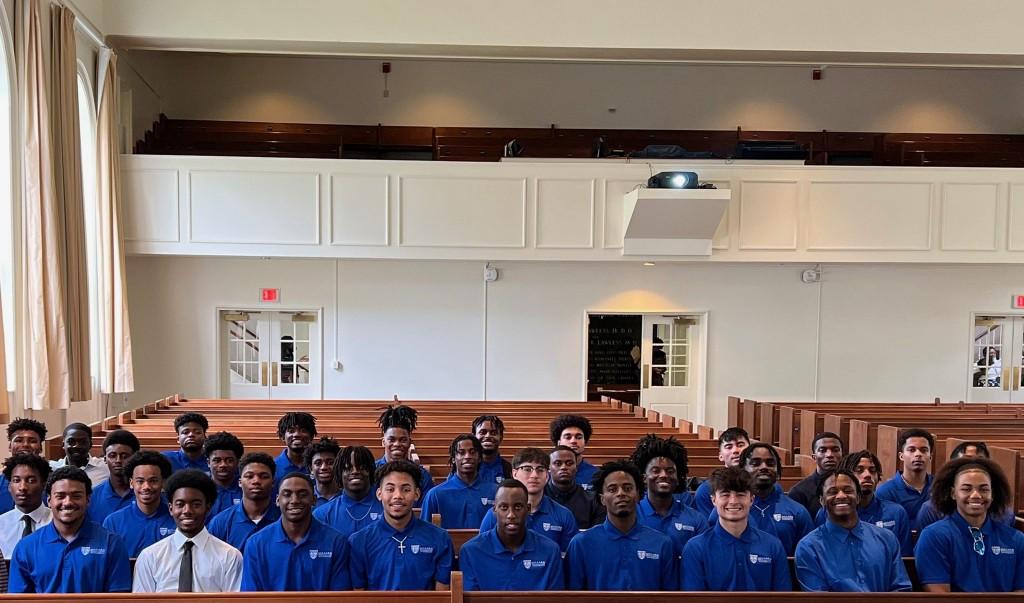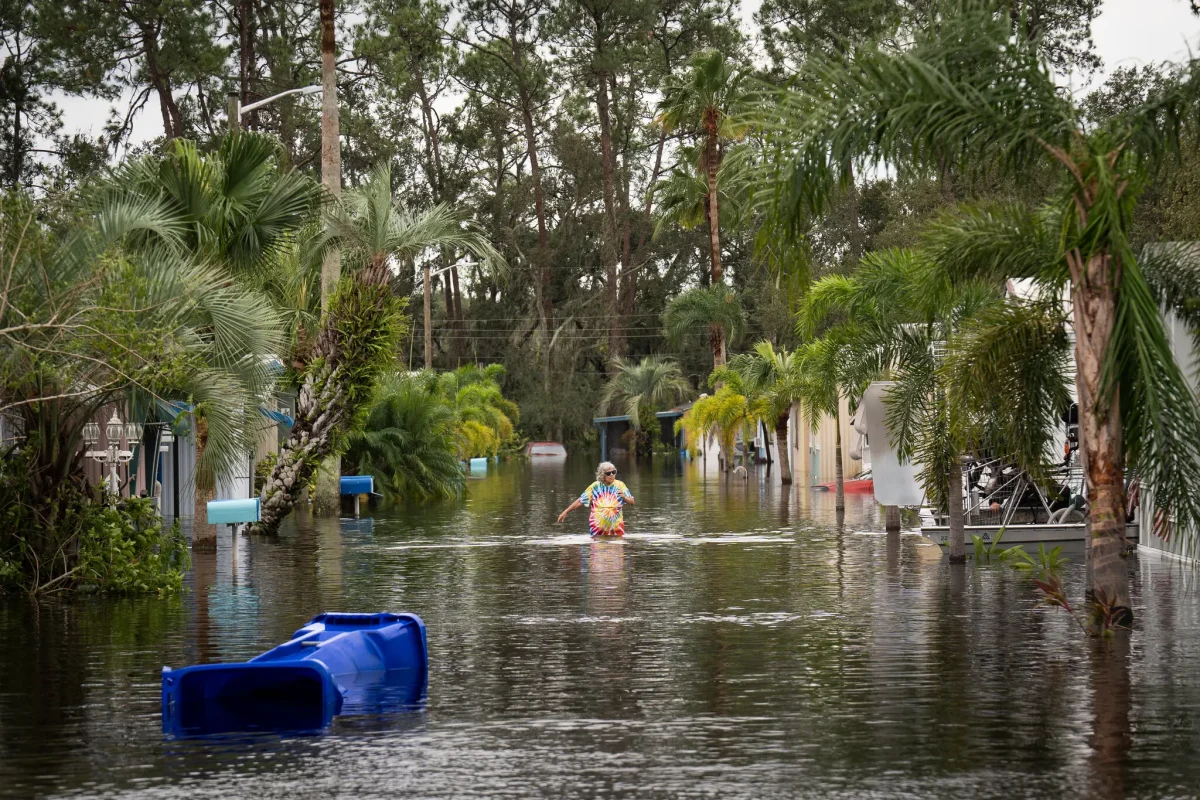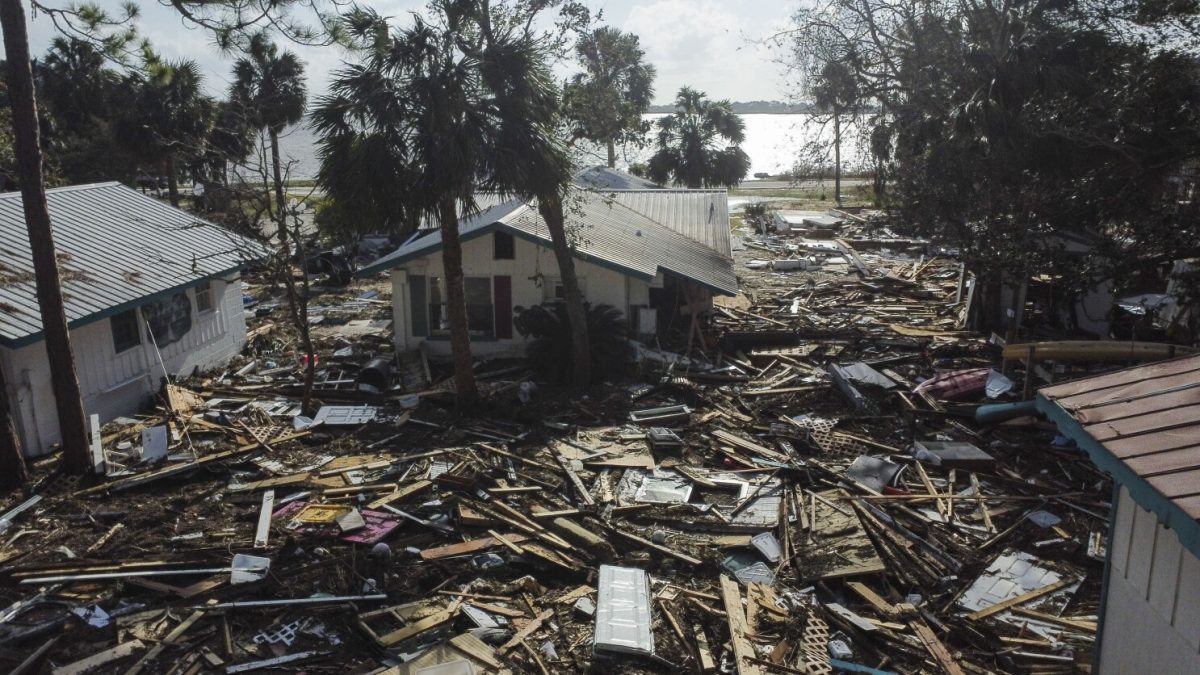
India Walton/Courtbouillon
Construction workers pause while laying dirt near the Dillard sign today. The campus has four months to go before construction is complete.
NEW ORLEANS (September 7, 2018) – Four months to go. The $6.5 million Hazard Mitigation Project is set to be completed on time in December even though reopening the main gate was delayed by a couple of days to Thursday, according to Adonis Woods, director of facilities management.
Woods, who has been posting frequent updates, said the project scheduled extra days for inclement weather. After 14 months of enduring closed roads, lack of access to parking and problems navigating walking through the center of campus, the news is sure to be welcomed by the campus community and visitors alike, along with the anticipated positive results of reducing flooded sidewalks and roads on campus.
The campus main gate, road and parking area behind Rosenwald originally were scheduled to reopen this past Tuesday, but Woods announced the main gate would reopen Thursday instead. Woods said contractors wanted to ensure that the area has time enough to dry.
DU has three options for access into the school: St. Anthony (Cook) gate, Warrington (Central Plant) gate and Virgil (Gentilly Gardens) gate.
Contractors started replacing speed bumps Thursday, beginning with the Warrington gate road, with plans to move on to replace the ones on the St. Anthony road.
What’s left to do
Woods said next steps – depending on weather conditions – include:
- Installation of the last run of stormwater piping between Camphor and Kearny halls in two weeks, starting Sept. 17.
- Paving parking lots behind DUCIEF, Dent and the bookstore, starting simultaneously.
- Replanting the grass in the construction zone, starting Sept. 18.
The results will be worth it, Woods said, because the project was designed to handle a 10-year, 24-hour storm event. In addition to reducing the need for sloshing through flooded sidewalks in rain boots, enhanced drainage will reduce water damage to campus buildings. The amount of storm water runoff released to the Sewage and Water Board pumping stations from the campus will be lessened. And the campus storm water system won’t be as dependent on city pumps remove high volumes of water.
Woods said the new system will manage storm water through the use of natural features, contours and structures. It includes porous pavement and three grassed swale zones and gravity-flow water to a dry detention pond to bring water to Mandolin Canal at a controlled rate so the pumping station won’t be overburdened.
“The detention pond in the back of campus [will be able to] detain water 48-72 hours before releasing into the pumping stations,” he said.
Woods said the project is one phase of a multi-phase approach to improve infrastructure and beautify the campus. Other initiatives include a student-lead sustainability group and collaborative efforts with the Office of Residential Life.
He said his office wants to “exceed expectations.”



























